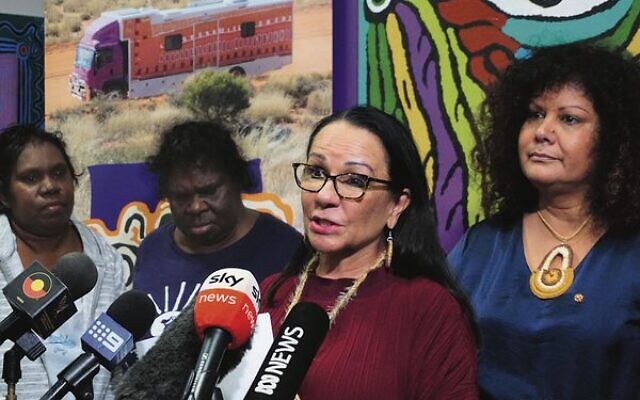Do we need the Voice to close the gap?
Improving health outcomes for indigenous Australians.

Last week the Productivity Commission (PC) released its latest review of the National Agreement on Closing the Gap. Its key message is that “progress is falling short of envisaged expectations”. The PC thinks that this is because “Australian governments do not appear to have grasped the nature and scale of change required to accelerate improvements in life outcomes for Indigenous people’.
Productivity Commission chair Michael Brennan says that the Agreement on Closing the Gap holds significant promise because it takes a different approach, creating a “partnership between government and peak Indigenous groups” focused on improving outcomes by “changing the systems and structures that drive them” but that the problem is that “so far we are seeing too much business-as-usual and too little real transformation”.
Prime Minister Anthony Albanese says the Voice to Federal Parliament is the solution but with support for the Voice declining perhaps it is worth looking at strategies that will work with or without the Voice.
The gap between Indigenous and non-Indigenous Australians is fundamentally about health. The first commitment of 17 listed in the agreement is that “Aboriginal and Torres Strait Islander people enjoy long and healthy lives”. The latest data from the Australian Bureau of Statistics from 2021 shows the median age at death for Indigenous Australians is 62.5 years compared to 82.2 for the non-Indigenous population. How can this gap be closed?
The answer may lie in looking at the causes of illness and death in the Indigenous community. The most recent study on this was released by the Australian Institute of Health and Welfare in March last year. Studying it, three features are striking.
First, the good news is that the health of Indigenous Australians has improved over the 15 years from 2003 to 2018 with a 15 per cent decline in the total disease burden, due to a 27 per cent decrease in the fatal disease burden. So somebody somewhere is doing something right. Yet while the absolute gap in the burden between Indigenous and non-Indigenous Australians decreased between 2003 and 2018, the relative gap remained stable at a ratio in which the disease n is 2.3 times greater for Indigenous Australians each year.
The second important point to note is that the disease burden differs across the different states and the territory, as well as according to remoteness and socio-
economic groups. The Northern Territory and Western Australia had higher rates of Indigenous disease burden compared with New South Wales and Queensland (these are the four jurisdictions that were studied). The gap between Indigenous and non-Indigenous Australians was largest in Western Australia, where Indigenous Australians experienced a total burden at 2.7 times the rate of non-Indigenous Australians.
Very large inequalities were also evident depending on location, with very remote and remote areas having higher rates of disease burden and the burden was highest in areas where the population was most disadvantaged. This provides an important clue. As Indigenous living standards improve, so does their health.
The third vital point about the disease burden among Indigenous Australians is that 49 per cent of it can be prevented by, in order of importance, reducing or avoiding exposure to tobacco and alcohol, losing weight, not using illicit drugs, and avoiding dietary risks.
This makes the challenge of narrowing the gap clearer. More than 20 per cent is due to tobacco, 15 per cent is due to overweight, 12 per cent due to alcohol, and 11 per cent to high blood sugar. Critically, changing these lifestyle habits doesn’t depend on a Voice to Parliament.
Take tobacco for instance. What the most recent study by the ABS shows is that while there has been great progress made in Australia, there has been no change to the gap between smoking prevalence in the Indigenous adult population compared with the non-Indigenous adult population during the 20 years to 2014–15. The gap was still around 30 percentage points. It is worth noting however that increases were faster for Aboriginal and Torres Strait Islander peoples living in non-remote areas than in remote areas.
Given the importance of remoteness as a contributor to the gap, it is worth considering why Indigenous people in remote areas are so disadvantaged in economic terms. While there are increasing employment opportunities in remote Australia in mining and tourism, Indigenous land tenure is an ongoing obstacle to Indigenous businesses and home ownership in Indigenous communities. Until this is resolved, improvements in living standards in remote communities – and health – are likely to lag behind those of Indigenous Australians in the rest of Australia.
Rebecca Weisser is an experienced researcher, journalist, editor and public policy and communications consultant.

comments